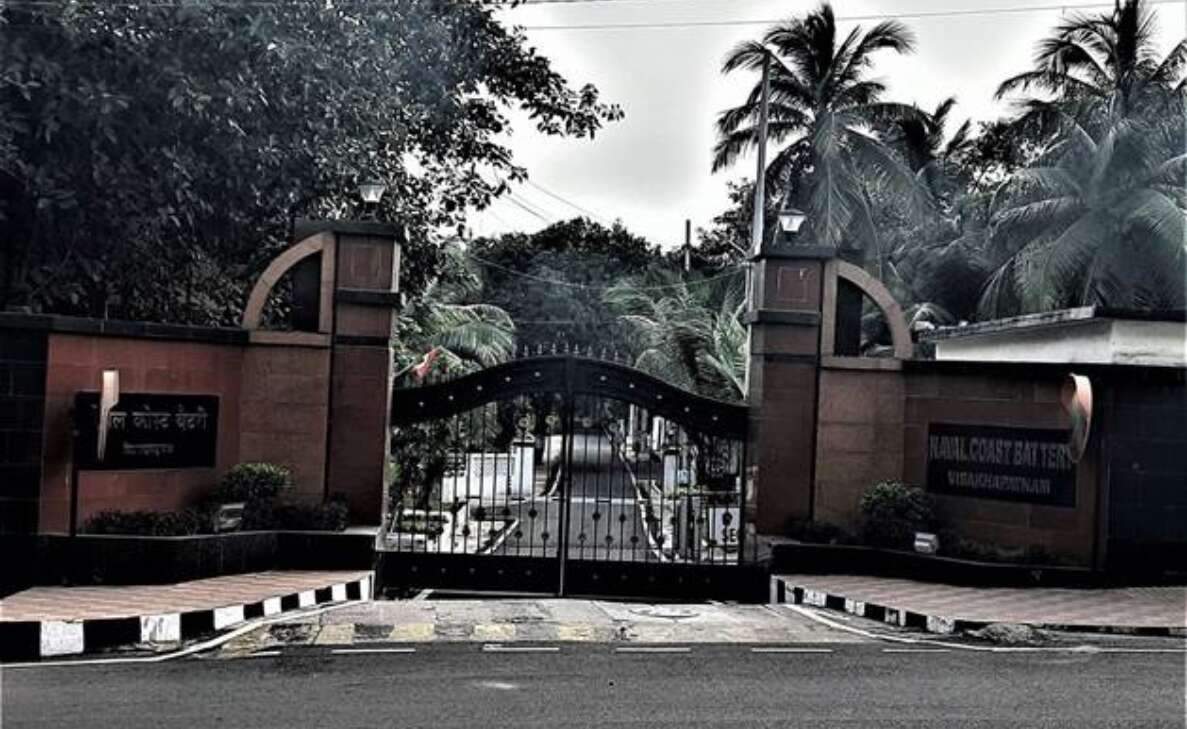
During the Second World War, the port city of Visakhapatnam drew more attention than any other city on the East Coast of India. It might be because of its strategic location and the threat from Japan during the war. When the war started in 1939, the British Government in India called back all the Army and Civil Officers on leave.
Before the war started, the Visakhapatnam Harbour was already developed as a major port. A civilian airport was under construction. Andhra Medical College, King George Hospital, and Andhra University were already established and functioning. In addition to district officers, the city was the headquarters for the DIG of Police, Superintendent Engineer PWD, and Conservator of Forests. Senior officials from the port and railways were also stationed in the town. The population was around 70,000 during the beginning of the war.
Geographically, Visakhapatnam is situated midway between Calcutta and Madras. This long coast assumed much significance as the supplies to the war efforts were to be made along this coast to British possessions in Hong Kong, Malaya (now Malaysia), Singapore, and Burma. After the war was declared in September 1939, it was decided to make Visakhapatnam a Naval station. An office of the Senior Naval Officer In-Charge Visakhapatnam was opened in December 1939, with his jurisdiction from Port Baruva in the North to Port Vodarevu in the South.
The Army, Navy, and Air Force personnel arrived in small detachments at Visakhapatnam during the early 1940s. It was the duty of the city’s civil administration to find a suitable place for these defence personnel. Initially, most of the Army units were put up in tents in open areas. Air Force units occupied places at 104 Area and Butchirajupalem near the Civilian Aerodrome. The Air Force requisitioned land for a few airstrips for alternative landing places outside the city.
The Army wanted a large place on the seafront with an unobstructed view to establish a coastal battery to defend the city from any aggression over the sea. At that time, a Japanese invasion of Visakhapatnam was envisioned by the British authorities. Finding a suitable place for a coastal battery for the army became the most difficult job for the civil administration as most of the coast was already occupied by fishermen’s hamlets. Ultimately, a suitable place for the Army was found on the seafront towards the north of the old city. But this place was also occupied by the fishermen. As the defence of the city was paramount and the Defense of India Rules empowered the government to acquire any land for defence, the fishermen were forcibly vacated from that hamlet.
However, they were relocated to an uphill location on the south side of the acquired land where new huts were constructed for them. The new hamlet was named Kotha Jalaripeta, which is still known by the same name. The government, while shifting the fishermen, shifted their village temple also to the new location.
At the newly acquired site, the Indian Regiment of Artillery established a battery known as the 5th Indian Heavy Battery in 1940 with two 6-inch Guns. To avoid confusion with mobile heavy batteries, all the batteries on the coast were renamed Coastal Batteries by the Army. Accordingly, the one at Visakhapatnam was renamed the 5th Indian Coast Battery in December 1941.
Till 1964, the coastal battery in Visakhapatnam was manned by the Artillery Regiment of the Indian Army. Consequent to Chinese aggression, the Government of India decided to hand over all the coastal batteries in India to the Navy in 1964. From that time on, the Visakhapatnam Coastal Battery is known as Naval Coast Battery, Visakhapatnam (NCB-V).
During the 1971 war, the Naval Coast Battery in Visakhapatnam was in a state of high alert. To keep their men and machines fit for any eventuality, they used to fire their guns at periodic intervals with live ammunition. These events take place during the night with prior intimation to the public. The trail of bullets in burning red flying in the air and falling at far-off distances in the sea was a spectacle to watch for the beachgoers those days.
The Eastern Naval Command is entrusted with the task of the defence of the East Coast of India and also the responsibility of safeguarding the maritime interest across the eastern seaboard. The Naval Coast Battery- NCB (V) is entrusted with the task of defending the city of Visakhapatnam from any aggression from the seaside.
Compiled by Vijjeswarapu Edward Paul Mobile: +91 94401 73695
Email: edwardpaulv@gmail.com
Stay tuned to Yo! Vizag website and Instagram for more heritage stories.
This post was last modified on 19/08/2023 8:17 pm
Mango, the king of fruits, has arrived in the Visakhapatnam markets in different varieties to…
The postal ballot process in Visakhapatnam will begin on Sunday and all arrangements for it…
The Simhachalam temple will celebrate the Chandanotsavam festival, known for its 'Nijaroopa Darshan' on 10…
Prime Minister Narendra Modi is scheduled to make another visit to Andhra Pradesh to rally…
Accompanied by Sri Bharat, the son-in-law and TDP-BJP-JSP combine candidate for the Visakhapatnam Lok Sabha…
The mercury levels are reaching new heights every day, and needless to say, it is…
Leave a Comment